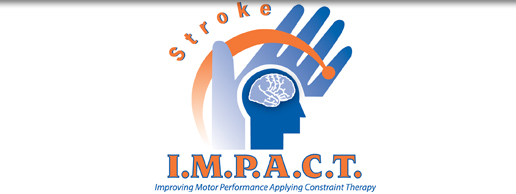Participants with upper-extremity (arm and hand) effects of stroke, receive two weeks of intense rehabilitation in research facilities at the University of Florida in Gainesville, Colorado State University in Fort Collins and the University of South Carolina in Columbia.
Constraint Induced Therapy has been used with great success for over a decade. CIT restricts the use of the less affected upper extremity usually by means of a mitt. Worn on the hand of the unaffected upper extremity, the mitt restricts the stronger hand's use while intense repetitive therapeutic tasks are performed with the more affected hand and arm. CIT Therapy is directed by a trainer working one-on-one with a subject. The therapy is conducted for ten consecutive weekdays with evaluations performed at the outset, immediately after and again four months post-intervention.


No comments:
Post a Comment